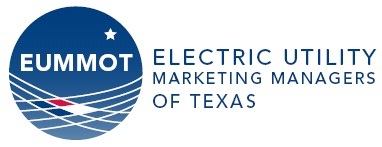Deemed Saving Engine
Deemed Savings are pre-determined, validated estimates of energy and peak demand savings attributable to energy efficiency measures in a particular type of application. An electric utility may use these estimates instead of energy and peak demand savings estimated through measurement and verification (M&V) activities.
Deemed savings values for Texas are housed in the statewide Technical Resource Manual (TRM). The development and maintenance of the TRM is one of the primary objectives of the Public Utility Commission of Texas’ (PUCT) Evaluation, Measurement and Verification (EM&V) contractor.
Technical Reference Manual (TRM)
The savings from many energy efficiency measures can be estimated fairly reliably through engineering algorithms. Technical Reference Manuals (TRMs) typically include “Deemed Savings” for these energy efficiency measures at two levels—Deemed and Partially Deemed. Deemed measures are fairly straightforward calculations with stipulated savings values and/or inputs to engineering algorithms. Partially Deemed measures require measurement or quantification of some key inputs to the engineering algorithms used to calculate energy savings.
The use of deemed and partially deemed savings calculations is the standard approach in the energy efficiency industry for non-custom measures. Other states with TRMs (or similar standardized source of deemed savings) include Arkansas, California, Georgia, Illinois, Iowa, Maine, Massachusetts, Michigan, Minnesota, New Jersey, New York, Ohio, Oklahoma, Pennsylvania, Vermont and Wisconsin. There are also regional TRMs such as for the Mid-Atlantic and Northwestern states.
The use of the Texas TRM by multiple investor-owned utilities ensures consistent calculation and reporting of energy and demand savings for like measures. In addition, the TRM describes methodologies for the estimation of energy and demand savings for custom measures where more rigorous methods are needed to calculate energy savings.
EUL
EUL stands for the “Estimated Useful Life” of an energy efficiency measure. As defined in EUMMOT’s petition to revise existing estimated useful life values (PUC docket number 36779), an EUL is the number of years until 50 percent of installed measures are still operable and providing savings, and is used interchangeably with the term “measure life.” The EUL determines the period of time over which the benefits of the energy efficiency measure are expected to accrue. The net present value of the benefits is used to determine whether the measure is cost-effective under the PUC’s definition of cost-effectiveness and to help determine the appropriate incentive level to be paid to project sponsors. EULs for each deemed measure are provided in the TRM.
Lighting
Design Lights Consortium Qualified LED Fixtures
Standard Fixture Wattage Table
Frontier maintains the Standard Fixture Wattage Table on behalf of EUMMOT. This table specifies deemed pre and post-installation lighting loads in compliance with the current version of the Texas Technical Reference Manual (TRM). The wattage table is also available in the “Fixture Codes” tab of the subsequent Lighting Survey Form.
Lighting Survey Form (LSF)
Frontier Energy maintains the lighting savings calculator (technically known as the “Lighting Survey Form” or “LSF”) used by many of the major Texas utilities. This calculator is updated on an annual basis to reflect current deemed savings methodologies as specified in the Texas Technical Reference Manual (TRM). The LSF is updated periodically with the latest approved lighting technologies (per utility request) and later incorporated into the annual LSF update at the beginning of each new program year.
The LSF includes changes to lighting rules and requirements petitioned by the electric utilities of Texas and approved by the Public Utility Commission of Texas (PUCT). Please reach out to your utility for a copy of the latest version of the LSF.
LED Lighting Approval Entities
The following links will direct you to the entities that qualify LEDs for use in a utility rebate program. Both entities update their lists several times a month. These approved technologies, as well as any LED technology approved specifically by Frontier Associates, are listed in Frontier Associate’s LED Lighting Table above.
